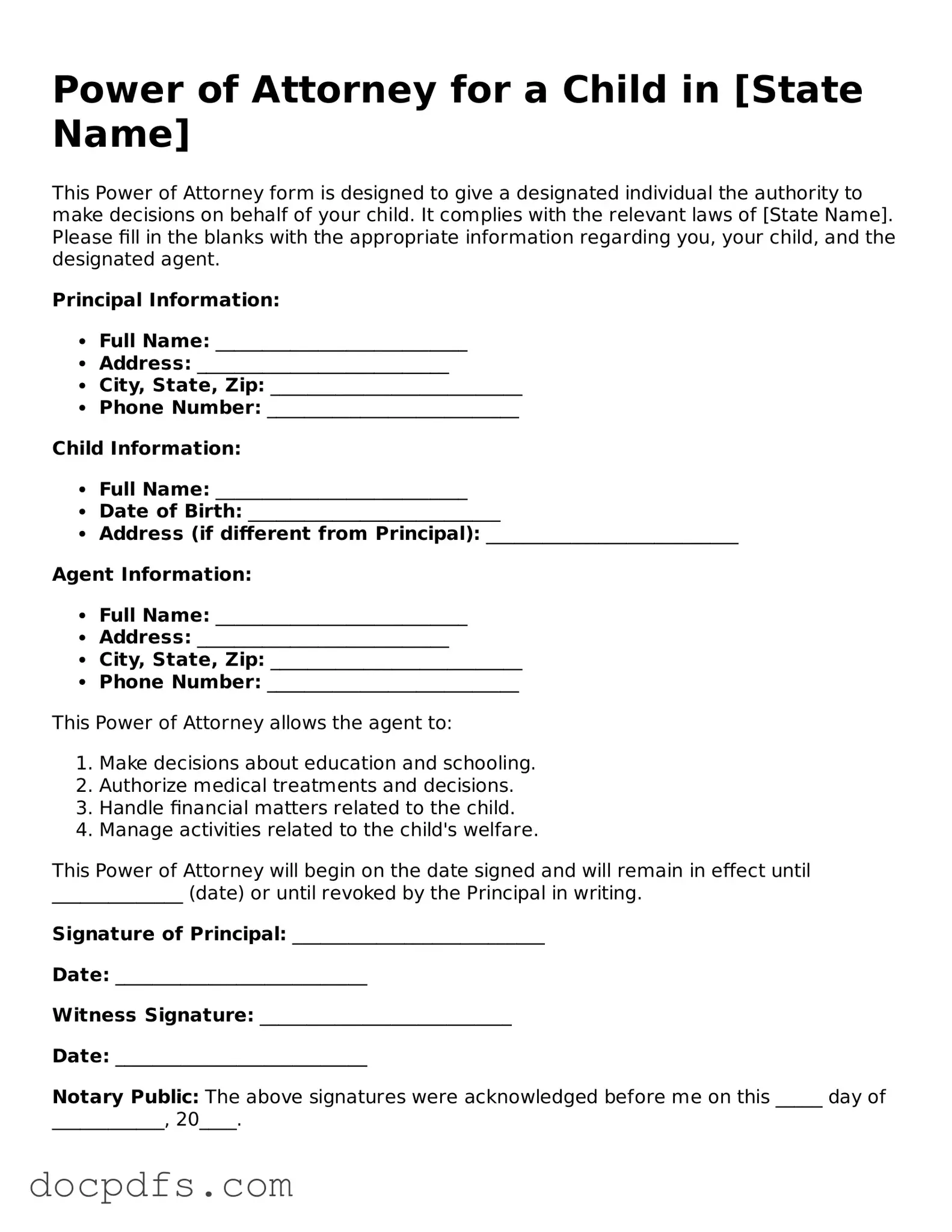What is a Power of Attorney for a Child?
A Power of Attorney for a Child is a legal document that allows a parent or guardian to grant another adult the authority to make decisions on behalf of their child. This can include medical decisions, educational choices, and other important matters when the parent is unavailable.
Why would I need a Power of Attorney for my child?
There are several reasons you might need this document:
-
If you travel frequently and cannot be with your child.
-
If you are temporarily unable to care for your child due to illness or other circumstances.
-
If you want someone else to have the authority to make decisions in case of an emergency.
Who can be designated as an attorney-in-fact?
The person you designate as your child's attorney-in-fact can be a trusted family member, friend, or another adult. It’s essential to choose someone responsible and who understands your values and wishes regarding your child's care.
What decisions can the attorney-in-fact make?
The attorney-in-fact can make various decisions, which may include:
-
Medical decisions, including consent for treatment.
-
Educational decisions, such as enrolling your child in school.
-
Travel arrangements, if necessary.
How long does the Power of Attorney last?
The duration of the Power of Attorney can vary. You can specify a certain time frame in the document, or it can remain in effect until you revoke it or until your child reaches a certain age. Always check local laws for specific requirements.
Do I need a lawyer to create this document?
While it's not always necessary to hire a lawyer, consulting one can ensure that the document meets all legal requirements in your state. If you choose to create the document yourself, make sure to follow all guidelines carefully.
Can I revoke the Power of Attorney?
Yes, you can revoke the Power of Attorney at any time as long as you are of sound mind. It’s important to notify the attorney-in-fact and any relevant institutions, such as schools or medical facilities, about the revocation.
What if the attorney-in-fact cannot fulfill their duties?
If the attorney-in-fact is unable to perform their responsibilities, you can designate a backup person in the Power of Attorney document. If no backup is named, you may need to create a new document to appoint someone else.
Is a Power of Attorney for a Child the same as guardianship?
No, a Power of Attorney is not the same as guardianship. Guardianship is a more permanent legal arrangement that typically requires court approval. A Power of Attorney is usually temporary and can be revoked more easily.
